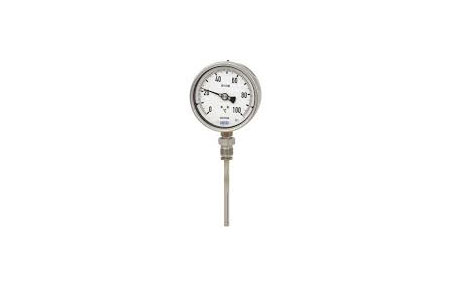What Are The Common Issues With Temperature Gauges?
Key Takeaway
Temperature gauges can encounter various issues, such as inaccurate readings or complete failure. One common problem is calibration drift, where the gauge becomes less accurate over time. Another issue is corrosion, which can affect the sensor’s performance, especially in harsh environments.
Other problems include mechanical damage to analog gauges or electrical failure in digital ones. Regular maintenance, proper installation, and calibration can help prevent these issues. It’s essential to address any problems promptly to ensure the temperature gauge functions correctly and provides reliable data.
Introduction to Temperature Gauge Performance
Temperature gauges work by measuring the temperature of a specific environment or substance and displaying the result for users to monitor. These devices are found in a wide range of applications, from household appliances to industrial machines, and even scientific research equipment. For temperature gauges to provide accurate data, they must perform correctly and remain calibrated.
A key challenge with temperature gauges is maintaining consistent performance. Due to various internal and external factors, gauges may encounter issues that cause inaccurate readings, which can lead to operational inefficiencies, system failures, or safety concerns. It’s essential to understand the common problems that can arise with these devices to maintain their optimal performance.
Proper maintenance, regular calibration, and addressing environmental factors are all necessary practices to ensure that temperature gauges operate as intended. By recognizing and troubleshooting common issues, users can avoid disruptions and maintain reliable temperature monitoring.

Mechanical Issues in Gauges
Mechanical issues are among the most common problems that temperature gauges can experience, particularly with analog devices. These issues may arise from the wear and tear of components or physical damage to the gauge itself. Common mechanical issues include:
1. Worn-out Thermocouple or Sensor: Over time, the thermocouple or sensor in the temperature gauge can degrade or become damaged, leading to inaccurate readings.
2. Broken Dial or Needle: In analog temperature gauges, the dial or needle can become dislodged or broken, resulting in unreliable or unreadable measurements.
3. Leaking or Faulty Housing: If the casing or housing of the gauge is compromised, it may allow moisture, dust, or debris to enter, which can cause damage to the internal components.
These mechanical issues often require professional repair or, in some cases, the replacement of parts. Regular maintenance and handling of the gauge with care can help prevent mechanical failures and extend the lifespan of the device.
Calibration Errors
Calibration is essential for maintaining the accuracy of temperature gauges. However, errors in the calibration process can cause significant inaccuracies. Calibration errors can happen for several reasons, such as:
1. Incorrect Reference Standards: Using an uncalibrated or inaccurate reference thermometer during calibration can lead to discrepancies between the gauge reading and the actual temperature.
2. Improper Adjustment: If the temperature gauge is not adjusted correctly after calibration, it may continue to provide incorrect readings even though the process was performed.
3. Lack of Regular Calibration: Over time, temperature gauges can drift from their original calibration settings, which is why it’s crucial to perform regular checks and adjustments.
To prevent calibration errors, ensure that you are using calibrated reference standards and tools. Conduct calibration at both low and high temperature points and check the gauge at intermediate temperatures to ensure consistent performance across the entire range.
Environmental Factors Affecting Gauges
Temperature gauges are sensitive to environmental factors that can affect their performance. These factors include temperature fluctuations, humidity, and exposure to corrosive substances. Common environmental issues include:
1. Temperature Fluctuations: Extreme or rapid changes in temperature can impact the gauge’s accuracy, especially for analog models. This can cause the reading to temporarily drift, resulting in inconsistent data.
2. Humidity and Moisture: Excess moisture can corrode metal components, particularly in analog gauges, which may cause malfunction or failure. Digital gauges with unsealed housings are also at risk.
3. Vibration and Shock: High levels of vibration, particularly in industrial settings, can lead to mechanical issues, affecting the internal components of the temperature gauge.
To protect against these environmental factors, place the temperature gauge in a stable, controlled environment whenever possible. Use protective housings or seals to prevent moisture and dust from affecting the gauge’s accuracy. For highly sensitive applications, consider using more robust, industrial-grade gauges designed to withstand challenging environments.
Signs of Faulty Temperature Readings
Recognizing when a temperature gauge is providing faulty readings is crucial to avoiding operational issues. Some common signs that your gauge may be malfunctioning include:
1. Inconsistent Readings: If the temperature readings fluctuate erratically or change unexpectedly, this may indicate that the gauge is not functioning properly.
2. Stuck Needle or Display: In analog gauges, a needle that doesn’t move or a frozen digital display may indicate a mechanical or electrical problem within the device.
3. Significant Deviations from Expected Values: If the temperature gauge consistently reads higher or lower than expected, it could be out of calibration or damaged.
4. Delayed Response: A temperature gauge that takes too long to respond to temperature changes may be experiencing issues with its sensor or circuitry.
If you notice any of these signs, it’s important to troubleshoot the gauge or seek professional help to assess and resolve the issue. Regular maintenance and calibration checks will help identify these problems before they affect operations.
Conclusion
In conclusion, common issues with temperature gauges can stem from several sources, including faulty wiring, sensor malfunctions, and calibration errors. These problems can lead to inaccurate readings, which may compromise the safety and efficiency of the systems that rely on these gauges. Identifying and addressing these issues promptly is essential to maintaining the proper functioning of temperature gauges.
Regular maintenance and inspections can help prevent these common issues. By ensuring that all components are in good working condition and recalibrating gauges as needed, users can maintain the accuracy and reliability of temperature measurements. Understanding and addressing these common problems can lead to improved system performance and reduced risk of equipment failure, ultimately enhancing safety and operational efficiency.

